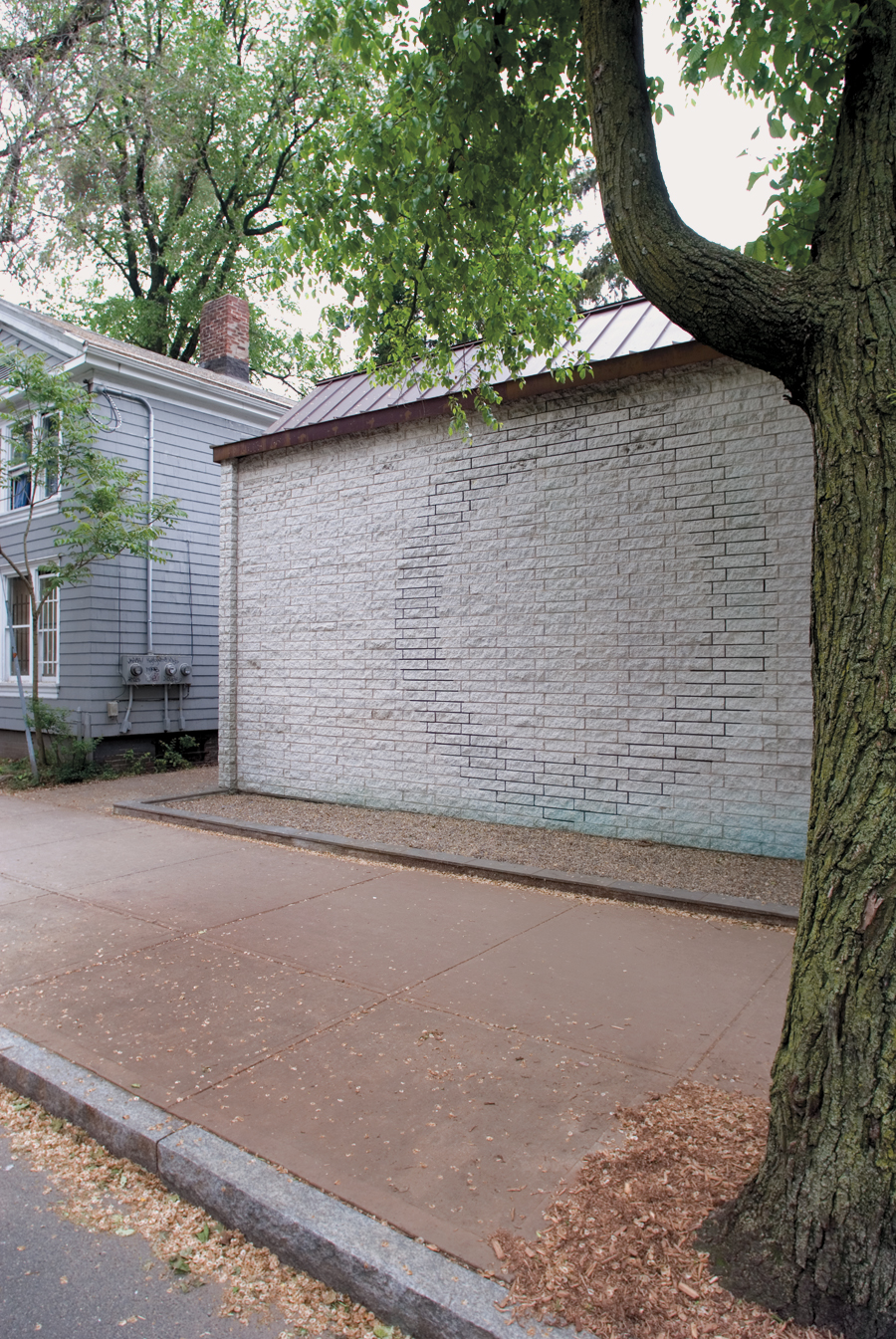Picture Piece: Secret Symbol
Josef Albers's secret symbol for the Manuscript society at Yale University
Josef Albers's secret symbol for the Manuscript society at Yale University

Secrecy is power. But too much secrecy can be as counterproductive as too little. If people don’t know a secret exists, they can’t covet it – or fear it. Hence the accord struck by Yale University’s senior societies, such as Skull and Bones or Wolf’s Head: sub-masonic groups whose rules and rituals are kept clandestine but whose windowless gothic revival and neo-classical clubhouses – or ‘tombs’– are hidden in plain sight on the streets of New Haven.
These ostentatious structures leave the passer-by in no doubt that something secret is going on within them. All except one: the tomb of Manuscript, a society devoted to the arts, which displays a simple white brick wall to the street that does nothing to mystify or entice. If you were to walk past it, you might think it was the back of a car repair shop. The only adornment visible on its surface is the hint of a circle. A trick of the light? A sigil of street grime?

Manuscript’s tomb was designed by King-lui Wu, a professor of architecture at Yale. The building, which has a number of hidden subterranean floors, reflects Wu’s own dislike of ornament. However, upon its completion in 1962, Wu thought the structure too austere even for his angular sensibilities. So he turned to his mentor and the head of Yale’s Department of Design, Josef Albers, to help adorn it.
Albers was then working on the monumental series of paintings for which he is best known, ‘Homage to the Square’ (1949–76), experimenting with the optical and psychological effects that colours can produce over thousands of canvases. He had chosena square for these experiments, precisely because it was a shape devoid of symbolism. Here, colours could be pushed and juxtaposed, given weight and imbued with movement. Within the square, Albers decreed, he could make his colours ‘do what I want, and not what they want’.

Wu’s white-brick wall offered Albers a release from this meticulous pigmental laboratory. Not only did it allow him to work with a gloriously colourless canvas, but the society’s secretiveness allowed him to incorporate a mysticism into his design that ‘Homage to the Square’ did not permit. So it was that Albers designed a circle for the tomb’s wall – a potent symbol that spoke of both unity and the sun, the latter being one of Manuscript’s secret emblems. In keeping with the building’s occult usage, he created this circle by removing the mortar between the bricks, allowing shadows to define the shape. It was an act of negation quite unlike the methodical accretion that marked his canvases, a whisper instead of a lecture. The result is something of a minimalist mystery: a symbol from a defiant anti-symbolist; a barely discernible shape from a master of perception; a monochrome mural that doesn’t brag of its secrets but leaves you in no doubt that something is going on in there.























